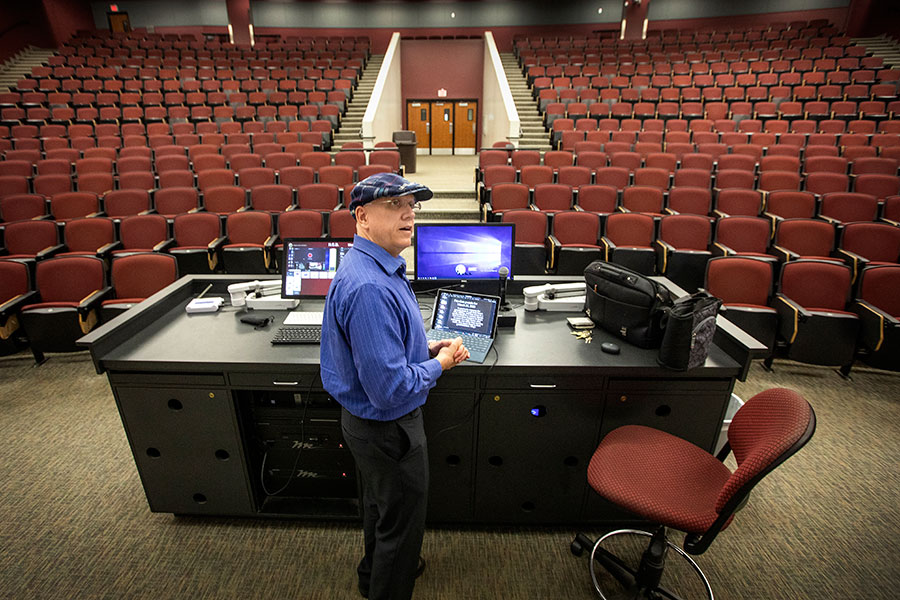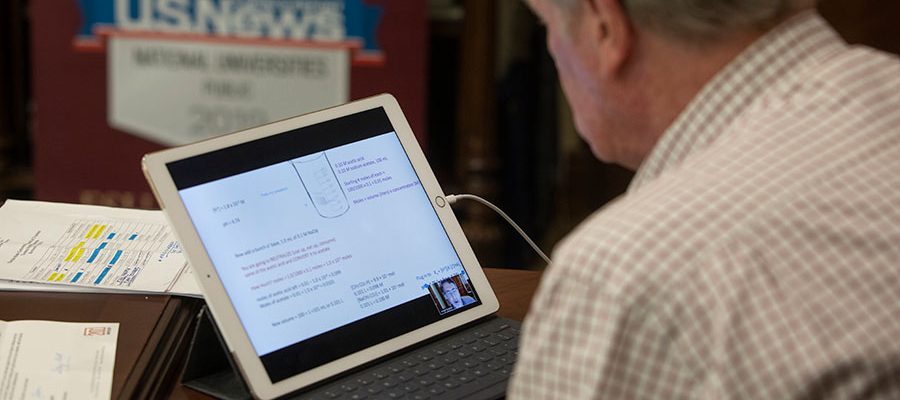
Florida State University began a new chapter in its history Monday, March 23, as the entire campus moved to remote learning in response to the COVID-19 global pandemic.
President John Thrasher experienced the transition firsthand Monday morning as he joined Robert O. Lawton Distinguished Professor Joseph Schlenoff during his chemistry class via Zoom, a remote conferencing service that is one of the tools the university is using to connect faculty and students.
“I hope everybody is doing well,” Thrasher told the class. “I’m proud of our faculty, certainly proud of our students, and I appreciate everyone hanging in there with us during this tough time. This is going to be tough to get through, and there are going to be some bumps in the road, but I think that we can get there. I really do.”

Administrators, faculty and staff across campus rose to the challenge of transitioning about 42,000 students and more than 3,000 faculty and instructors into this new era of remote learning in just two weeks.
John Braswell, a member of the instructional technology faculty in the Office of Distance Learning, played an integral role by training faculty during the change.
“We immediately started a big campaign to get everyone up to speed with an emergency teaching plan,” Braswell said. “We have a whole range of levels of help we’re providing — from large webinars to one-on-one consultations.”
Braswell has provided training and outreach support in instructional technologies to the FSU community for more than 25 years, and he was instrumental in developing some of the university’s first online courses. But he’s never trained so many faculty in such a short time.
In the two weeks leading up to FSU’s move to remote learning, Braswell trained about 1,000 faculty and instructors on how they can best deliver academic content to their students.
“Our initial plan was to provide remote learning until April 6, which was really a quick action plan where we were just going to teach people how to create a quick lecture or add an assignment,” Braswell said. “Now that we know the semester is going to have to be entirely online, that really lifts the bar by introducing final projects, exams and other student activities.”
Michael Hammock, an assistant teaching professor of economics, usually teaches in front of 500 people on Mondays in HCB 101. This time, he taught the class in the vacant lecture hall via YouTube.
“I think all of the faculty here have gone to great lengths to make sure that the things we would normally make available to students are still available to them,” Hammock said. “We all believe the things we’re teaching are important. We’re switching almost everything we did before to online in one form or another. If we teach lectures in-person, then we are making those lectures available in video format, we’re making the notes available online and offering office hours over Zoom.”

One of the biggest challenges for Hammock is missing out on interactions with students.
“It’s going to be different and it’s going to be more difficult,” Hammock said. “It’s going to take all of us time to adjust to that, but I know we’re all going to try our hardest to do that.”
With FSU’s remote learning extending into Summer Sessions A, B, F and Law (8 week), Braswell noted the potentially positive implications that distance learning can have.
“I feel like we’re in the middle of a significant paradigm shift of how technology supported learning will be viewed in the future,” Braswell said. “There are a lot of instructors who haven’t touched a lot of these technologies who will view them in a different way after this. I believe that the line between an online course and a face-to-face course is really being erased right now.”
Braswell also noted the importance that collaboration and teamwork has played throughout this situation.
“Against the backdrop of such a terrible event, it has been really amazing to see the response from our faculty,” Braswell said. “It’s been a team effort, and as long as I’ve been here, I’ve never seen the university come together so well. There’s a lot of players who have to make all of these parts work.”
For more information about the Office of Distance Learning, visit odl.fsu.edu. For updates on coronavirus from FSU, visit fsu.edu/coronavirus.



